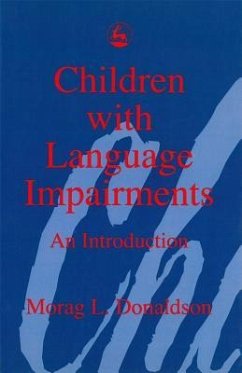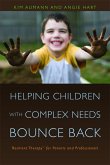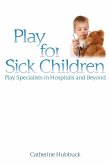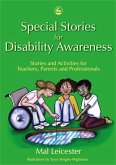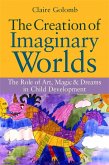Morag Donaldson
Children with Language Impairments
Schade – dieser Artikel ist leider ausverkauft. Sobald wir wissen, ob und wann der Artikel wieder verfügbar ist, informieren wir Sie an dieser Stelle.
Morag Donaldson
Children with Language Impairments
- Broschiertes Buch
- Merkliste
- Auf die Merkliste
- Bewerten Bewerten
- Teilen
- Produkt teilen
- Produkterinnerung
- Produkterinnerung
This book is an important summary of current awareness of language impairments in children. It is argued that approaches to intervention need to be geared to the strengths and weaknesses of the individual child and therefore that they must be closely integrated with thorough, ongoing assessment procedures.
Andere Kunden interessierten sich auch für
![Helping Children with Complex Needs Bounce Back Helping Children with Complex Needs Bounce Back]() Kim AumannHelping Children with Complex Needs Bounce Back31,99 €
Kim AumannHelping Children with Complex Needs Bounce Back31,99 €![Bringing Up a Challenging Child at Home Bringing Up a Challenging Child at Home]() Jane GregoryBringing Up a Challenging Child at Home27,99 €
Jane GregoryBringing Up a Challenging Child at Home27,99 €![Group Filial Therapy Group Filial Therapy]() Louise GuerneyGroup Filial Therapy64,99 €
Louise GuerneyGroup Filial Therapy64,99 €![Play for Sick Children Play for Sick Children]() Cath HubbuckPlay for Sick Children51,99 €
Cath HubbuckPlay for Sick Children51,99 €![Special Stories for Disability Awareness Special Stories for Disability Awareness]() Mal LeicesterSpecial Stories for Disability Awareness37,99 €
Mal LeicesterSpecial Stories for Disability Awareness37,99 €![The Creation of Imaginary Worlds The Creation of Imaginary Worlds]() Claire GolombThe Creation of Imaginary Worlds32,99 €
Claire GolombThe Creation of Imaginary Worlds32,99 €
This book is an important summary of current awareness of language impairments in children. It is argued that approaches to intervention need to be geared to the strengths and weaknesses of the individual child and therefore that they must be closely integrated with thorough, ongoing assessment procedures.
Produktdetails
- Produktdetails
- Verlag: Jessica Kingsley Publishers
- Seitenzahl: 144
- Erscheinungstermin: 1. Juli 1995
- Englisch
- Abmessung: 216mm x 140mm x 8mm
- Gewicht: 172g
- ISBN-13: 9781853023132
- ISBN-10: 1853023132
- Artikelnr.: 21270937
- Herstellerkennzeichnung
- Libri GmbH
- Europaallee 1
- 36244 Bad Hersfeld
- gpsr@libri.de
- Verlag: Jessica Kingsley Publishers
- Seitenzahl: 144
- Erscheinungstermin: 1. Juli 1995
- Englisch
- Abmessung: 216mm x 140mm x 8mm
- Gewicht: 172g
- ISBN-13: 9781853023132
- ISBN-10: 1853023132
- Artikelnr.: 21270937
- Herstellerkennzeichnung
- Libri GmbH
- Europaallee 1
- 36244 Bad Hersfeld
- gpsr@libri.de
Dr Morag L. Donaldson works at the Edinburgh Centre for Research in Child Development, University of Edinburgh.
1 Introduction. 1.1 Reflecting on language difficulties. 1.2 Language and
communication. 1.3 Language, spoken language and speech. 1.4 Disorder,
disability, impairment, delay and deviance. 1.5 Standards of comparison. 2
Categorising language Impairments. 2.1 The medical approach. 2.2 The
linguistic approach. 2.3 Combining the medical and linguistic taxonomies.
2.4 Children with Secondary Language Impairments. 2.5 Children with
Specific Language Impairments. 2.5 Overview and Implications. 3 Prevalence
of language Impairments in children. 3.1 Prevalence Studies. 3.2 Prevalence
Rates. 3.3 Gender. 3.4 Social Class 3.5 Intelligence. 3.6 Behaviour
Problems 3.7 Overview and Implications. 4. Prognosis for children with
language disorders. 4.1 Stability of language Impairments. 4.2 Prognosis
for reading abilities. 4.3 Prognosis for intelligence. 4.4 Prognosis for
Socio-Emotional and Behaviour problems. 4.5 Overview and Implications. 5.
Assessing language disorders. 5.1 Functions of assessment. 5.2 Contexts of
assessment. 5.3 Standardized tests. 5.4 Naturalistic observations. 5.5
Non-standardized elicitations. 5.6 Overview and Implications. 6. Approaches
to Intervention. 6.1 Issues of intervention.6.2 Goals of intervention. 6.3
Intervention techniques. 6.4 Agents of intervention. 6.5 Settings of
intervention. 6.6 Overview and Implications. 7. In Conclusion. References.
Glossary. Index.
communication. 1.3 Language, spoken language and speech. 1.4 Disorder,
disability, impairment, delay and deviance. 1.5 Standards of comparison. 2
Categorising language Impairments. 2.1 The medical approach. 2.2 The
linguistic approach. 2.3 Combining the medical and linguistic taxonomies.
2.4 Children with Secondary Language Impairments. 2.5 Children with
Specific Language Impairments. 2.5 Overview and Implications. 3 Prevalence
of language Impairments in children. 3.1 Prevalence Studies. 3.2 Prevalence
Rates. 3.3 Gender. 3.4 Social Class 3.5 Intelligence. 3.6 Behaviour
Problems 3.7 Overview and Implications. 4. Prognosis for children with
language disorders. 4.1 Stability of language Impairments. 4.2 Prognosis
for reading abilities. 4.3 Prognosis for intelligence. 4.4 Prognosis for
Socio-Emotional and Behaviour problems. 4.5 Overview and Implications. 5.
Assessing language disorders. 5.1 Functions of assessment. 5.2 Contexts of
assessment. 5.3 Standardized tests. 5.4 Naturalistic observations. 5.5
Non-standardized elicitations. 5.6 Overview and Implications. 6. Approaches
to Intervention. 6.1 Issues of intervention.6.2 Goals of intervention. 6.3
Intervention techniques. 6.4 Agents of intervention. 6.5 Settings of
intervention. 6.6 Overview and Implications. 7. In Conclusion. References.
Glossary. Index.
1 Introduction. 1.1 Reflecting on language difficulties. 1.2 Language and
communication. 1.3 Language, spoken language and speech. 1.4 Disorder,
disability, impairment, delay and deviance. 1.5 Standards of comparison. 2
Categorising language Impairments. 2.1 The medical approach. 2.2 The
linguistic approach. 2.3 Combining the medical and linguistic taxonomies.
2.4 Children with Secondary Language Impairments. 2.5 Children with
Specific Language Impairments. 2.5 Overview and Implications. 3 Prevalence
of language Impairments in children. 3.1 Prevalence Studies. 3.2 Prevalence
Rates. 3.3 Gender. 3.4 Social Class 3.5 Intelligence. 3.6 Behaviour
Problems 3.7 Overview and Implications. 4. Prognosis for children with
language disorders. 4.1 Stability of language Impairments. 4.2 Prognosis
for reading abilities. 4.3 Prognosis for intelligence. 4.4 Prognosis for
Socio-Emotional and Behaviour problems. 4.5 Overview and Implications. 5.
Assessing language disorders. 5.1 Functions of assessment. 5.2 Contexts of
assessment. 5.3 Standardized tests. 5.4 Naturalistic observations. 5.5
Non-standardized elicitations. 5.6 Overview and Implications. 6. Approaches
to Intervention. 6.1 Issues of intervention.6.2 Goals of intervention. 6.3
Intervention techniques. 6.4 Agents of intervention. 6.5 Settings of
intervention. 6.6 Overview and Implications. 7. In Conclusion. References.
Glossary. Index.
communication. 1.3 Language, spoken language and speech. 1.4 Disorder,
disability, impairment, delay and deviance. 1.5 Standards of comparison. 2
Categorising language Impairments. 2.1 The medical approach. 2.2 The
linguistic approach. 2.3 Combining the medical and linguistic taxonomies.
2.4 Children with Secondary Language Impairments. 2.5 Children with
Specific Language Impairments. 2.5 Overview and Implications. 3 Prevalence
of language Impairments in children. 3.1 Prevalence Studies. 3.2 Prevalence
Rates. 3.3 Gender. 3.4 Social Class 3.5 Intelligence. 3.6 Behaviour
Problems 3.7 Overview and Implications. 4. Prognosis for children with
language disorders. 4.1 Stability of language Impairments. 4.2 Prognosis
for reading abilities. 4.3 Prognosis for intelligence. 4.4 Prognosis for
Socio-Emotional and Behaviour problems. 4.5 Overview and Implications. 5.
Assessing language disorders. 5.1 Functions of assessment. 5.2 Contexts of
assessment. 5.3 Standardized tests. 5.4 Naturalistic observations. 5.5
Non-standardized elicitations. 5.6 Overview and Implications. 6. Approaches
to Intervention. 6.1 Issues of intervention.6.2 Goals of intervention. 6.3
Intervention techniques. 6.4 Agents of intervention. 6.5 Settings of
intervention. 6.6 Overview and Implications. 7. In Conclusion. References.
Glossary. Index.

